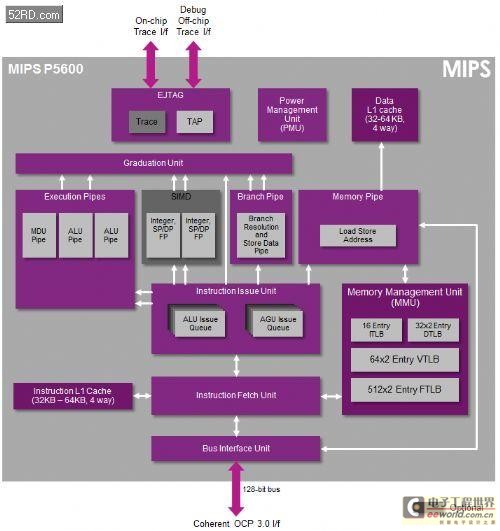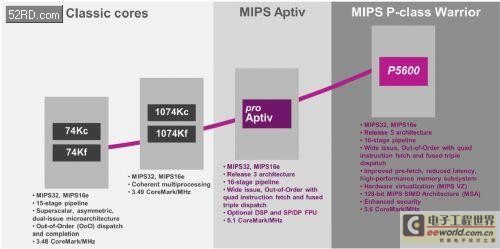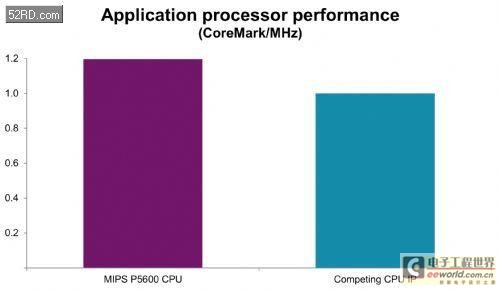Two months ago, I had the opportunity to attend the Imagination Summit in Japan for the first time. After the event, I was waiting at the airport to return to the UK when I saw a Nissan Motors billboard that read, "What if the man who ran the fastest in the world could be faster?" It sparked an interesting thought—what if we could push performance even further?
A few weeks later, my engineering team colleagues sent me an email informing me that the MIPS P5600 had achieved the number one spot in the CoreMark ranking with an impressive score of 5.6 CoreMark/MHz per CPU. This was more than just a win—it was a breakthrough.
The world's fastest single-threaded CPU is now even faster! This isn't just a random achievement; it's the result of our relentless pursuit of perfection. Even though we're already leading in the industry, we never stop improving. The P5600 has now claimed the title of the highest-performing processor in the CoreMark benchmark, surpassing even our own award-winning proAptiv architecture.
This result has been officially verified by EEMBC, the leading and long-established organization responsible for designing and maintaining the CoreMark benchmark. You can find all the certified results on their official website.
Upon closer inspection, we found that the MIPS P5600 not only delivers up to 20% better performance than its direct competitors but also occupies significantly less space. That’s a powerful combination for power-sensitive applications.
The P5600 offers up to 20% higher raw performance in a smaller area. This performance leap is not just about speed—it's about efficiency, too.
Interestingly, the CoreMark/MHz score of the P5600 even outperforms some of Intel’s desktop processors. For example, the Intel Core i7-2640M at 2.8 GHz achieves around 14,513.79 CoreMark, which translates to 5.18 CoreMark/MHz. That’s roughly 10% lower than the latest result from the P5600.
Among all licensable CPUs, the MIPS P5600 holds the highest and most proven CoreMark score. This level of performance efficiency will bring significant benefits to mobile, home entertainment, networking, automotive, and other power-sensitive embedded applications that rely on MIPS-based processors.
Even more importantly, these results were achieved using both the latest and existing GCC compilers. Whether it’s partner source code or Imagination’s SDK, all our customers have access to this high-performance toolchain. This approach stands in contrast to many of our competitors, who often require expensive, closed toolchains to achieve top benchmark scores. Imagination’s commitment to building an open ecosystem helps reduce time-to-market for embedded and mobile applications, delivering performance quickly and efficiently.
Introducing the MIPS P5600
The P5600 is part of the MIPS Warrior P-class processor family, designed to deliver ultimate performance for mobile and embedded applications. With a powerful and feature-rich microarchitecture, it brings advanced capabilities to the table.
The P5600 is a 32-bit CPU based on the MIPS Release 5 architecture and includes several unique features:
- Fast 128-bit SIMD engine: Accelerates multimedia processing and other matrix-based operations.
- Complete hardware virtualization technology: Supports multiple fully independent, parallel-running client operating systems.
- Enhanced security: Enables support for multiple TEEs (Trusted Execution Environments) on a single CPU, ideal for consumer and enterprise applications.
- Best-in-class branch prediction mechanism and TLB page table hardware for optimal performance, along with instruction bonding that doubles performance for memory-intensive tasks.
- Enhanced Virtual Addressing (EVA): Offers more flexible use of virtual address space for efficient memory management. Extended Physical Addressing (XPA) supports up to 1TB of memory (40 bits).
This high-end MIPS CPU is also part of our third-generation multi-issue, out-of-order (OoO), fully synthesizable processors. The image below shows the evolution of high-performance MIPS CPUs over time—from the 74K and proAptiv to the current P5600.
Evolution of high-end 32-bit MIPS CPU

The P5600 introduces several enhancements over the previous proAptiv generation, including improved extraction efficiency, reduced L2 cache latency, and enhanced pre-fetching capabilities. Additionally, improvements in cache replay and memory disambiguation help boost real-world performance, such as memory replication efficiency.

We are extremely proud of the record-breaking performance of the new MIPS Warrior CPU. This achievement stems from our long-term vision of building high-performance MIPS CPUs. Looking ahead, the evolution of the instruction set architecture (such as MIPS Release 6), continuous innovation in memory subsystems, and micro-architecture advancements will continue to make this product even better and deliver even greater results.

By combining MIPS Warrior CPUs, PowerVR Multimedia IP, and Ensigma Connectivity IP, system engineers can develop state-of-the-art embedded processors that deliver best-in-class performance with lower power consumption and a smaller footprint.
The stadium LED screen is ideal for places of with huge crowd. Its high resolution picture and wide viewing angle ensure best quality pictures and videos to every corner of the stadium. Stable body protects the display from any damage, even high speed ball.
The LED Display is manufactured by using best quality material, purchased from most reputed vendors. The final products feature supreme quality and offers best outputs. High refresh rate and gray scale ensures the picture quality remains seamless.
The display features a wide viewing angle of 120° horizontal and 120° in vertical which reaches more viewers. The picture quality remains seamless in all direction and at a distance, presenting all viewers the same highly quality outputs. This makes it suitable for large gathering. -
Stadium LED Display,Football Led Display,Staduim Led Display,Outdoor Football Led Display
Guangzhou Chengwen Photoelectric Technology co.,ltd , https://www.cwleddisplay.com